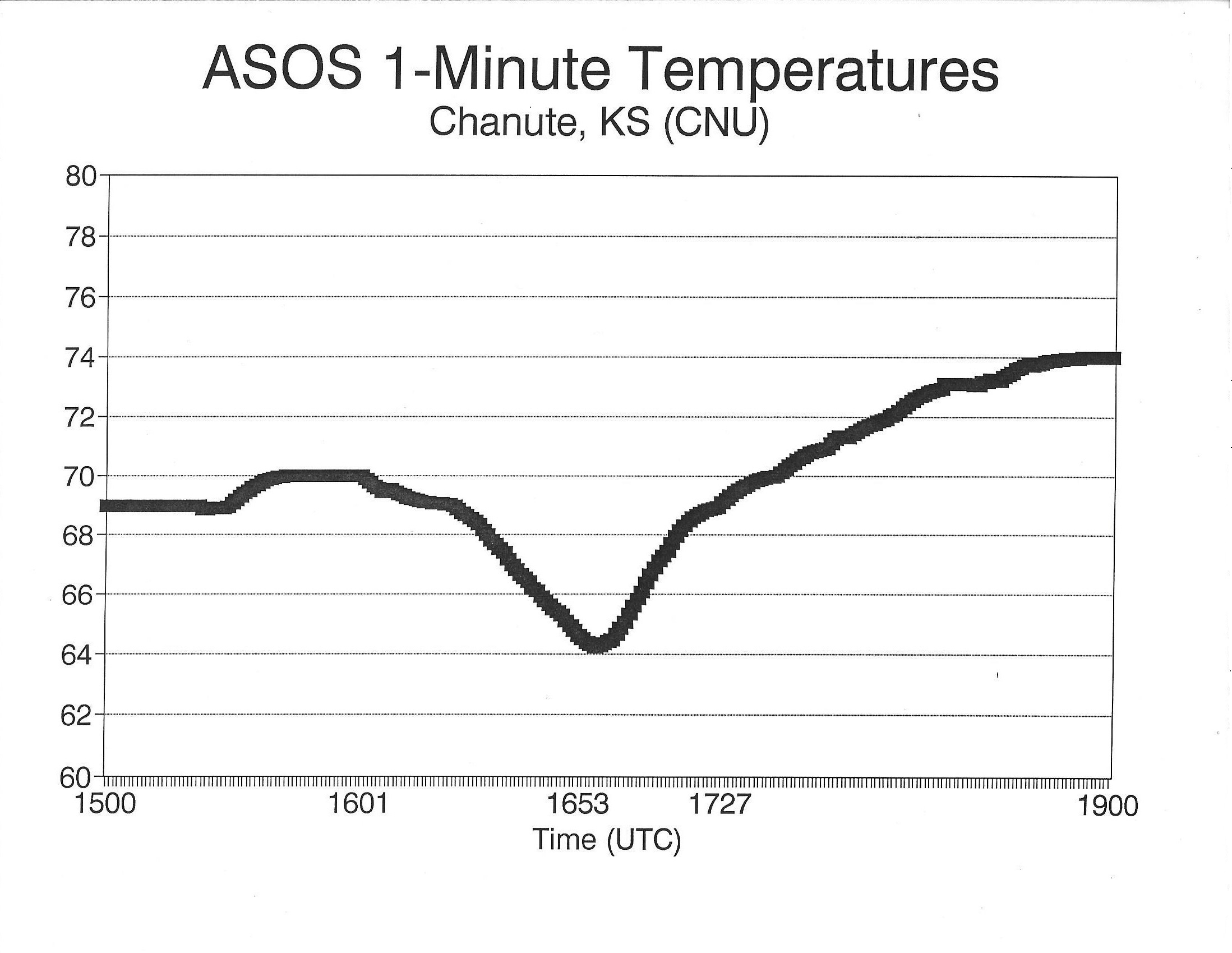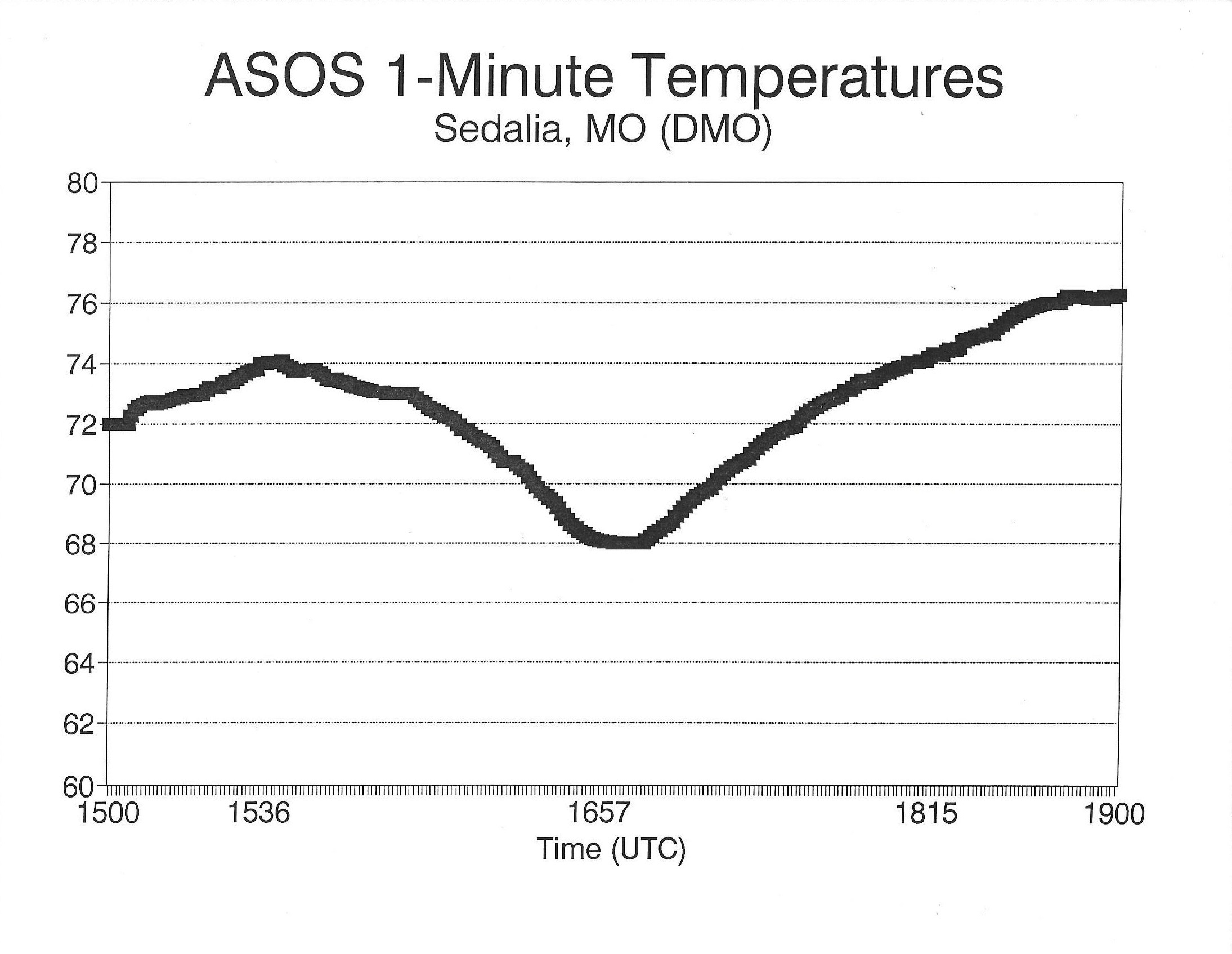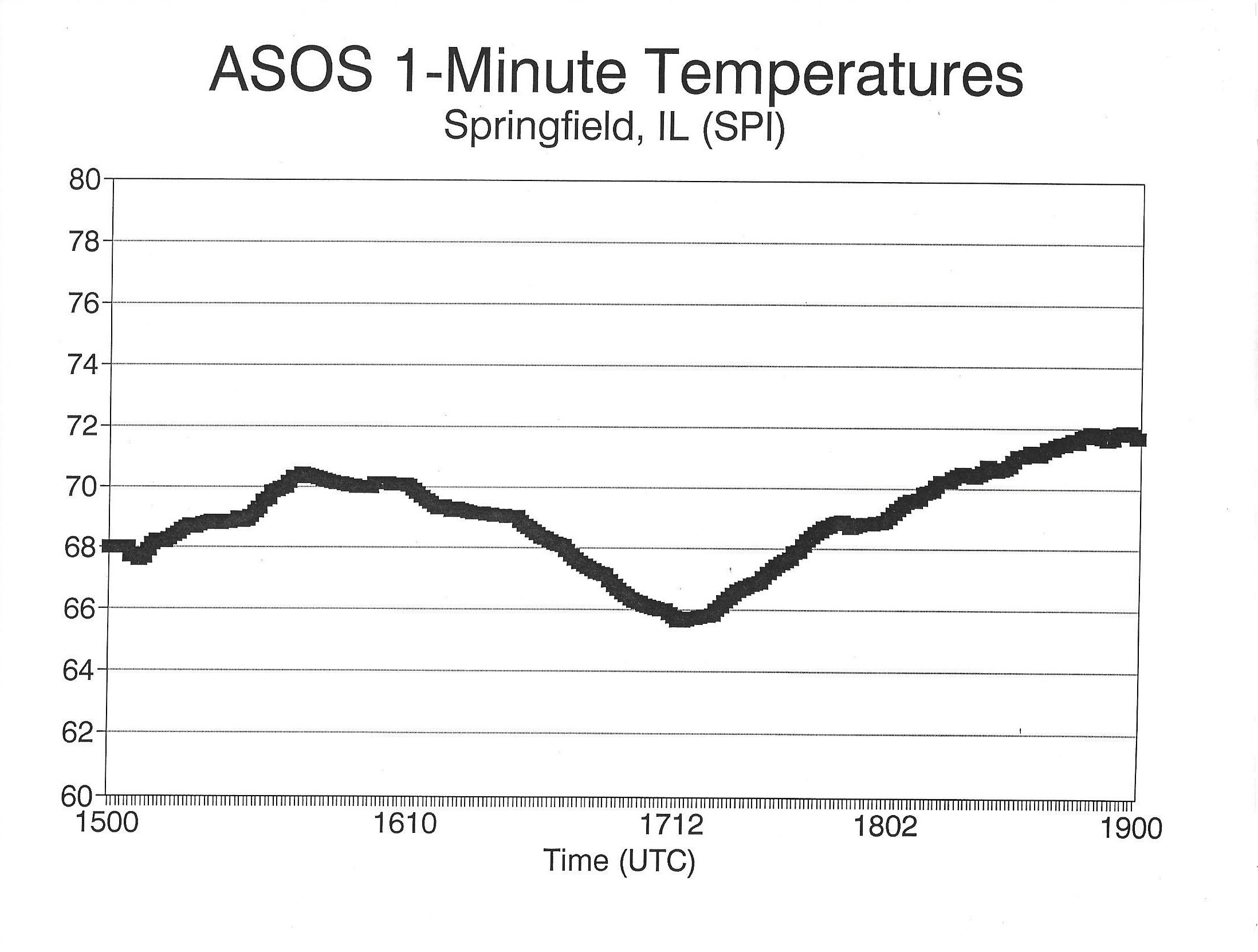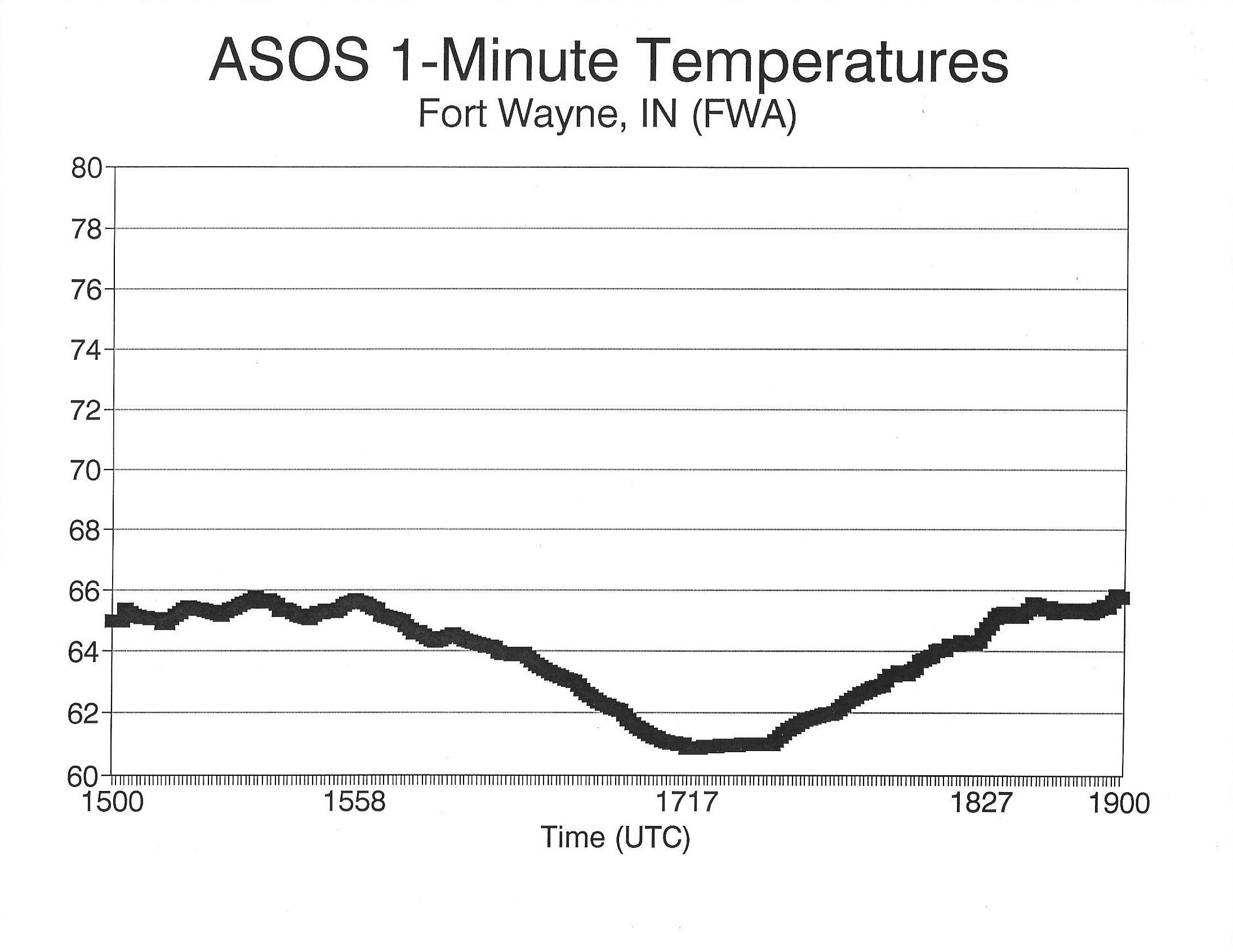
Figure 1: Temperture Trace at the National Weather Service Training Center (NWSTC), Kansas City, MO.
Have you ever wondered if the temperature at the earth's surface decreases during an eclipse? The answer is YES! The purpose of this web page is to illustrate this temperature drop for the case of 10 May 1994.
On 10 May 1994 an annular eclipse occurred across a large part of North America. The band of maximum coverage progressed from western portions of Mexico, through the central United States, into eastern Canada. An annular eclipse occurs when the moon, at or near the apogee of its orbit (farthest point from the Earth), passes in front of the Sun (solar disk). Due to the increased distance from the Earth, the moon appears smaller than usual and only partially covers the solar disk. This results in a ring of the solar disk remaining visible around the moon during the eclipse. This ring gives the eclipse its name, from the Latin word annulus, meaning ring.
The primary source of energy for increasing the temperature at the Earth's surface is the Sun. If the incoming solar energy is reduced or removed, the surface temperature decreases. This is seen everyday as the Sun sets. An eclipse only briefly interrupts the incoming solar energy, as a result the temperature falls during the eclipse but recovers after the event. Incoming solar energy is only one factor in calculating the energy balance, and thus the temperature, at the Earth's surface. This process is beyond the scope of this web page.

Figure 1 shows the temperature trace at the NWSTC in the eastern part of Kansas City, MO. Time, in all figures, is in UTC or Z-time, which is 5 hours different from CDT. The eclipse occurred around noon, CDT. In Figure 1 you can see the normal increase in temperature during the morning hours (1400Z to 1530Z). As the eclipse starts, the temperature levels off around 73-75 degrees F. At the peak of the eclipse, the temperature drops to 71 degrees F. Once the eclipse passes, the temperature again rises into the upper 70s. Please note that Kansas City was on the northern edge of the band of peak coverage.
Below are five more temperature traces from this annular eclipse event. The plot locations extend from southwest to northeast as you progress through the series. Note how the time of lowest temperature moves slowly to a later time as you move northeast. In each case the temperature drops at least 5 degrees. The Kansas City site shown below is at the airport in the northern part of the city.




